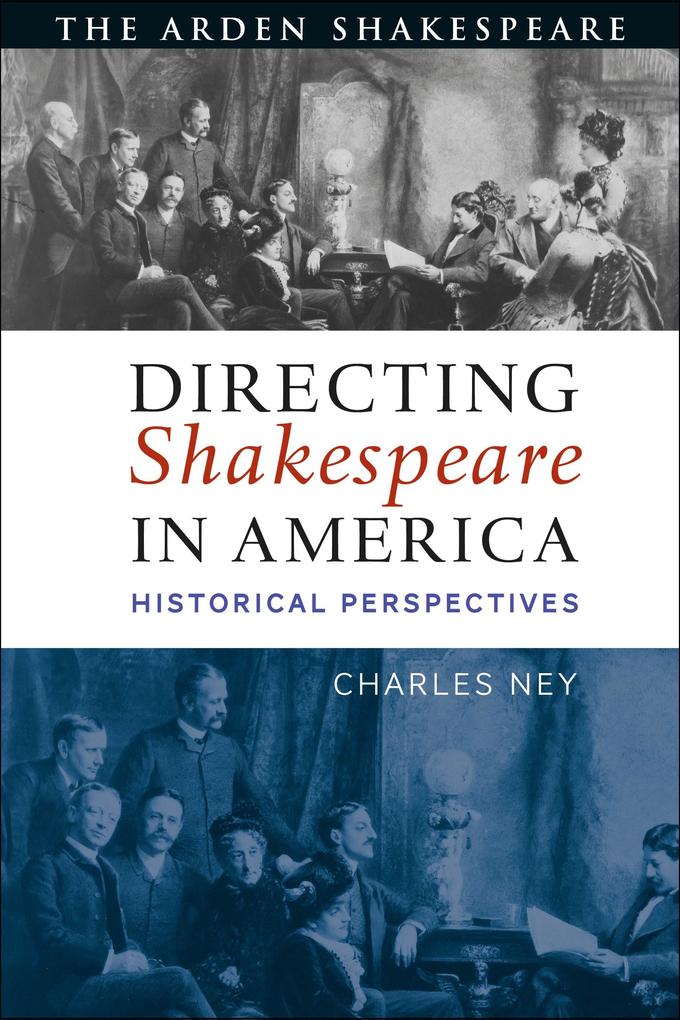
Zustellung: Di, 05.08. - Mo, 11.08.
Versand in 3-4 Wochen
VersandkostenfreiBestellen & in Filiale abholen:
This unique and comprehensive study reviews the practice of leading American directors of Shakespeare from the late 19th to the end of the 20th century. Charles Ney examines rehearsal and production records, as well as evidence from diaries, letters, autobiographies, reviews and photographs to consider each director's point of view when approaching Shakespeare and the differing directorial tools and techniques employed in significant productions in their careers.
Directors covered include Augustin Daly, David Belasco, Arthur Hopkins, Orson Welles, Margaret Webster, B. Iden Payne, Angus Bowmer, Craig Noel, Jack O'Brien, Tyronne Guthrie, John Houseman, Allen Fletcher, Michael Kahn, Gerald Freedman, Joseph Papp, Stuart Vaughan, A. J. Antoon, JoAnne Akalaitis, Paul Barry, Tina Packer, Barbara Gaines, William Ball, Liviu Ciulei, Garland Wright, Mark Lamos, Ellis Rabb and Julie Taymor. Directing Shakespeare in America: Historical Perspectives offers readers an understanding of the context from which contemporary practitioners operate, the aesthetic philosophies to which they subscribe and a description of their rehearsal methods.
Directors covered include Augustin Daly, David Belasco, Arthur Hopkins, Orson Welles, Margaret Webster, B. Iden Payne, Angus Bowmer, Craig Noel, Jack O'Brien, Tyronne Guthrie, John Houseman, Allen Fletcher, Michael Kahn, Gerald Freedman, Joseph Papp, Stuart Vaughan, A. J. Antoon, JoAnne Akalaitis, Paul Barry, Tina Packer, Barbara Gaines, William Ball, Liviu Ciulei, Garland Wright, Mark Lamos, Ellis Rabb and Julie Taymor. Directing Shakespeare in America: Historical Perspectives offers readers an understanding of the context from which contemporary practitioners operate, the aesthetic philosophies to which they subscribe and a description of their rehearsal methods.
Inhaltsverzeichnis
List of Illustrations
Acknowledgments
Introduction
1 First American Directors, 1870s-1940s
2 B. Iden Payne, Angus Bowmer and the Oregon Shakespeare Festival, 1930s-1990s
3 Craig Noel, Jack O'Brien and The Old Globe: 1930s-1990s;
Tyrone Guthrie's Influence: 1950s-1970s
4 American Shakespeare Festival Theatre: 1950s-1980s
5 New York Shakespeare Festival/The Public Theater: 1950s-1990s
6 Shakespeare Festival Directors and Theatres: 1950s-1990s
7 New York City and Regional Theatre Directors: 1950s-1990s
Conclusion
References
Index
Acknowledgments
Introduction
1 First American Directors, 1870s-1940s
2 B. Iden Payne, Angus Bowmer and the Oregon Shakespeare Festival, 1930s-1990s
3 Craig Noel, Jack O'Brien and The Old Globe: 1930s-1990s;
Tyrone Guthrie's Influence: 1950s-1970s
4 American Shakespeare Festival Theatre: 1950s-1980s
5 New York Shakespeare Festival/The Public Theater: 1950s-1990s
6 Shakespeare Festival Directors and Theatres: 1950s-1990s
7 New York City and Regional Theatre Directors: 1950s-1990s
Conclusion
References
Index
Produktdetails
Erscheinungsdatum
20. Februar 2020
Sprache
englisch
Seitenanzahl
264
Autor/Autorin
Charles Ney
Verlag/Hersteller
Produktart
kartoniert
Gewicht
408 g
Größe (L/B/H)
231/155/23 mm
ISBN
9781350149212
Entdecken Sie mehr
Bewertungen
0 Bewertungen
Es wurden noch keine Bewertungen abgegeben. Schreiben Sie die erste Bewertung zu "Directing Shakespeare in America" und helfen Sie damit anderen bei der Kaufentscheidung.









